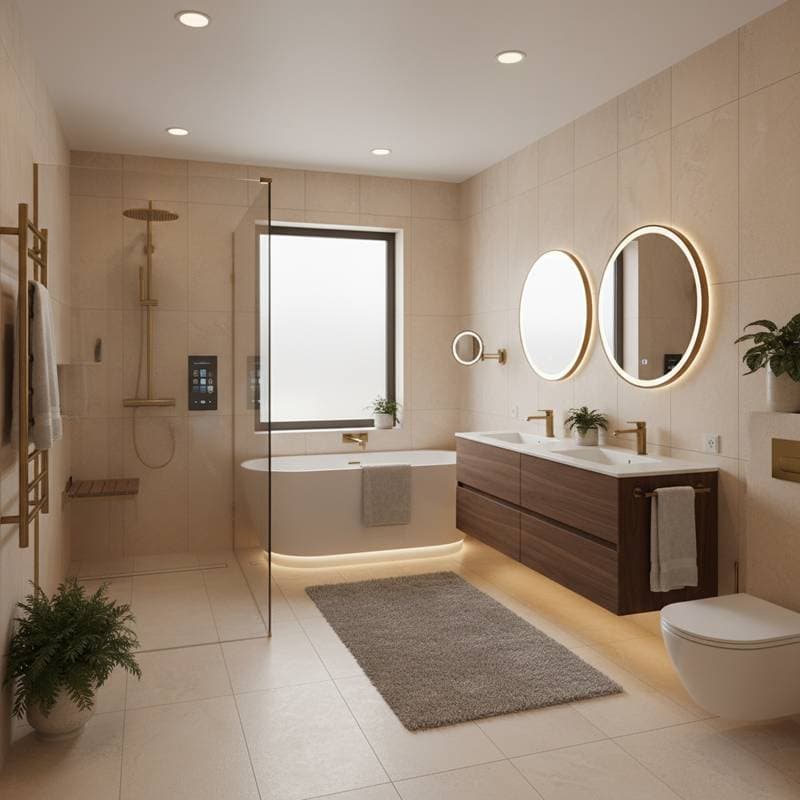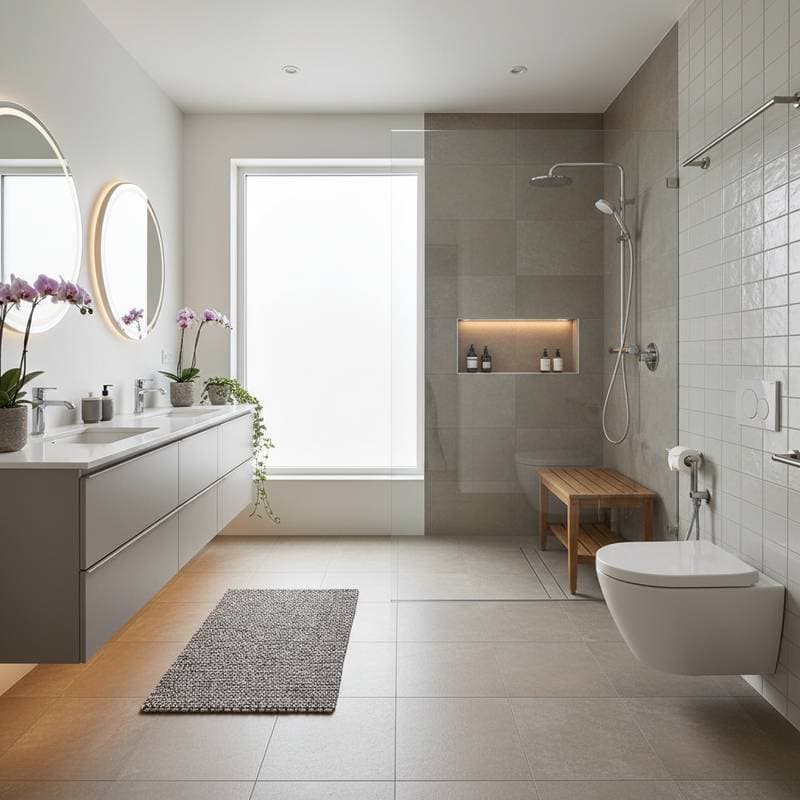Wet Rooms vs. Traditional Showers: Worth the Upgrade?
Homeowners are always looking for ways to modernize their bathrooms without making expensive mistakes. One of the biggest debates I hear on job sites and from clients is whether to go with a wet room or stick to a traditional shower setup. Both have strong points, but they also come with specific challenges that most homeowners do not fully understand until construction is well underway. As a contractor who has built both types of bathrooms many times, I can tell you that the right choice depends on your space, budget, and how you plan to use the room long term.
A wet room can transform a bathroom into a sleek, open environment with a spa-like feel. But if the waterproofing or drainage is not handled correctly, you could end up with serious water damage under your tile. A traditional shower, on the other hand, is easier to manage, but it can look dated or cramped compared to newer wet room styles. Let’s look at what really matters when deciding which option fits your home and your goals.
The Traditional Shower Setup
A traditional shower typically uses a raised tray or pan that directs water to the drain. The shower area is enclosed with glass doors or a curtain, and the rest of the bathroom remains dry. This design is familiar, reliable, and easier to build. It also limits the risk of water escaping into unwanted areas.
Traditional showers remain popular because they are predictable, easier to maintain, and less expensive to install. The materials are standardized, and most plumbers and tile installers know how to build them correctly. For smaller bathrooms or homes on a budget, a traditional shower still makes good sense.
The biggest drawback is visual. Compared to a wet room, a traditional setup can feel closed off. The raised tray and enclosure create boundaries that can make a small space look even smaller. Still, many homeowners find the trade-off worth it for the lower cost and simpler maintenance.
Potential Pitfalls and How to Avoid Them
From the contractor’s side, I have seen wet room projects go wrong for the same reasons over and over. Most failures come down to poor planning, cheap materials, or skipping essential steps in waterproofing. Avoiding these mistakes makes all the difference in how well your bathroom performs over time.
1. Inadequate Waterproofing
This is the most expensive mistake you can make. Always insist on a full waterproofing system, not just sealed grout. The membrane must extend up the walls and around all fixtures. Ask your contractor to show you the materials and explain how they will be applied. Do not settle for shortcuts.
2. Improper Drainage Design
If your floor slope is not correct, water will travel where it should not. The slope should be consistent toward the drain with no low spots that trap water. I recommend testing the slope before tiling to confirm proper flow.
3. Poor Ventilation
Wet rooms hold more moisture in the air than enclosed showers. Without strong ventilation, condensation can build up and cause mold growth. Upgrade your exhaust fan or add a humidity-sensing unit to keep air circulation steady.
4. Wrong Tile or Grout Selection
Large-format tiles look great, but they can make it harder to achieve proper slope to the drain. Smaller tiles or mosaics are often more practical for the shower floor. Choose epoxy or urethane grout rather than cement-based types to resist moisture and staining.
5. Underestimating Cost and Time
Wet rooms take more time and skill to complete. Cutting corners to stay within budget often means sacrificing waterproofing quality. If your contractor’s bid seems much lower than others, be cautious. Verify their experience with wet room installations and ask for references from past clients.
When a Traditional Shower Makes More Sense
Not every bathroom suits a wet room. In smaller spaces with limited ventilation, a traditional shower may be more practical. It keeps moisture contained, reducing the risk of dampness on walls and ceilings. It also avoids the structural changes needed for sloped floors.
If your plumbing is older or your subfloor cannot handle extensive waterproofing work, retrofitting a wet room can become complicated. A well-designed traditional shower can still look modern with the right tile, glass, and fixtures. Frameless glass doors, low-threshold pans, and linear drains can give you the visual openness of a wet room without the full complexity.
When a Wet Room Is Worth the Investment
A wet room becomes worth the upgrade when you want a long-term solution that combines accessibility, style, and durability. It is particularly valuable in master bathrooms or high-end remodels where design impact matters. For homes where resale value is a consideration, a properly built wet room can attract buyers who appreciate modern design.
In my experience, wet rooms also perform best when built from the ground up rather than retrofitted into an old structure. New construction allows for correct slope, drainage placement, and waterproofing from the start. If you are already remodeling a bathroom, that is the perfect time to consider it.
Maintaining Your Investment
Whether you choose a wet room or a traditional shower, good maintenance habits protect your investment. Keep grout and sealants in top condition, clean drains regularly, and maintain proper ventilation. Schedule routine inspections if you notice any damp spots, loose tiles, or musty smells.
If you go with a wet room, make sure your contractor provides documentation of the waterproofing system used. Keep that information for insurance and resale purposes. It proves that the job was done correctly and can save you headaches later.
For traditional showers, check the caulking around trays and doors every few months. Replace it as needed to prevent leaks. Even small gaps can lead to water damage behind the walls.
Moving Forward with Confidence
Choosing between a wet room and a traditional shower is not just a matter of taste. It is a technical and financial decision that affects how your bathroom performs for years. The wet room offers unmatched style and accessibility, but it demands precise installation and higher upfront cost. The traditional shower remains a dependable, lower-risk option that suits most homes.
If you decide to upgrade, do it with full understanding of what each system requires. Hire contractors experienced in the style you choose, ask for proof of waterproofing methods, and insist on quality materials. A well-built bathroom should serve you for decades without hidden surprises. With the right planning and professional execution, you can create a space that looks great, functions flawlessly, and protects the value of your home.









